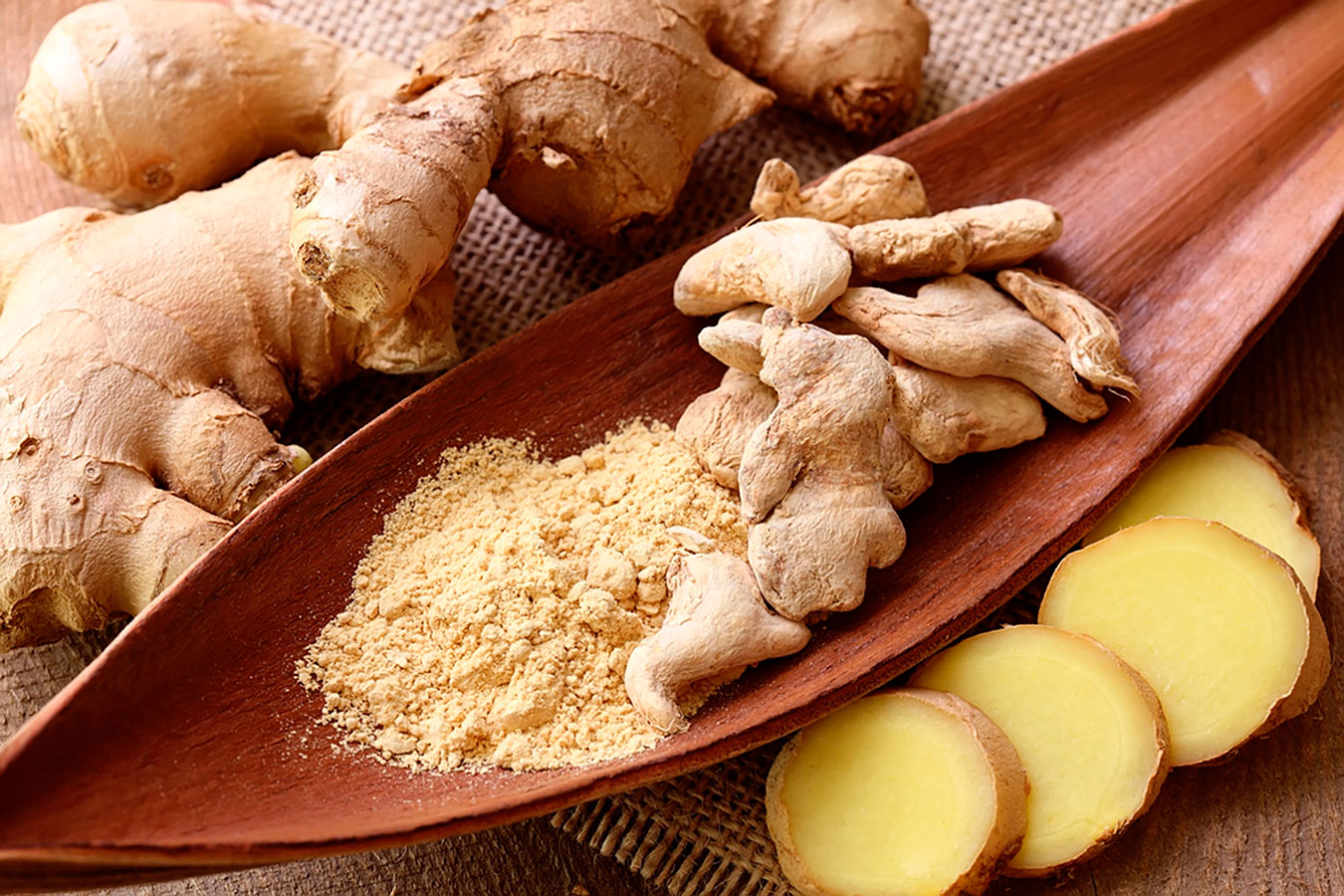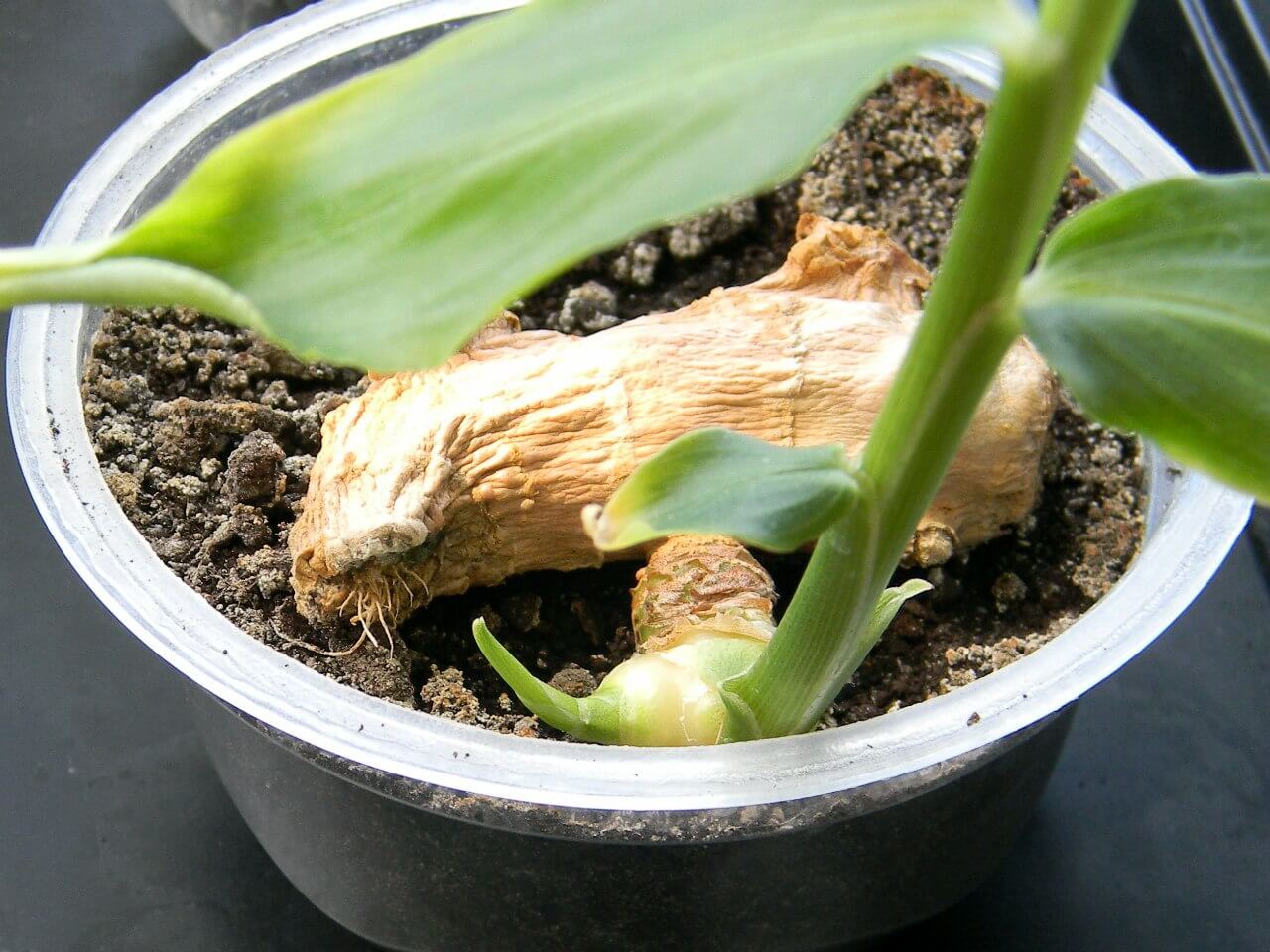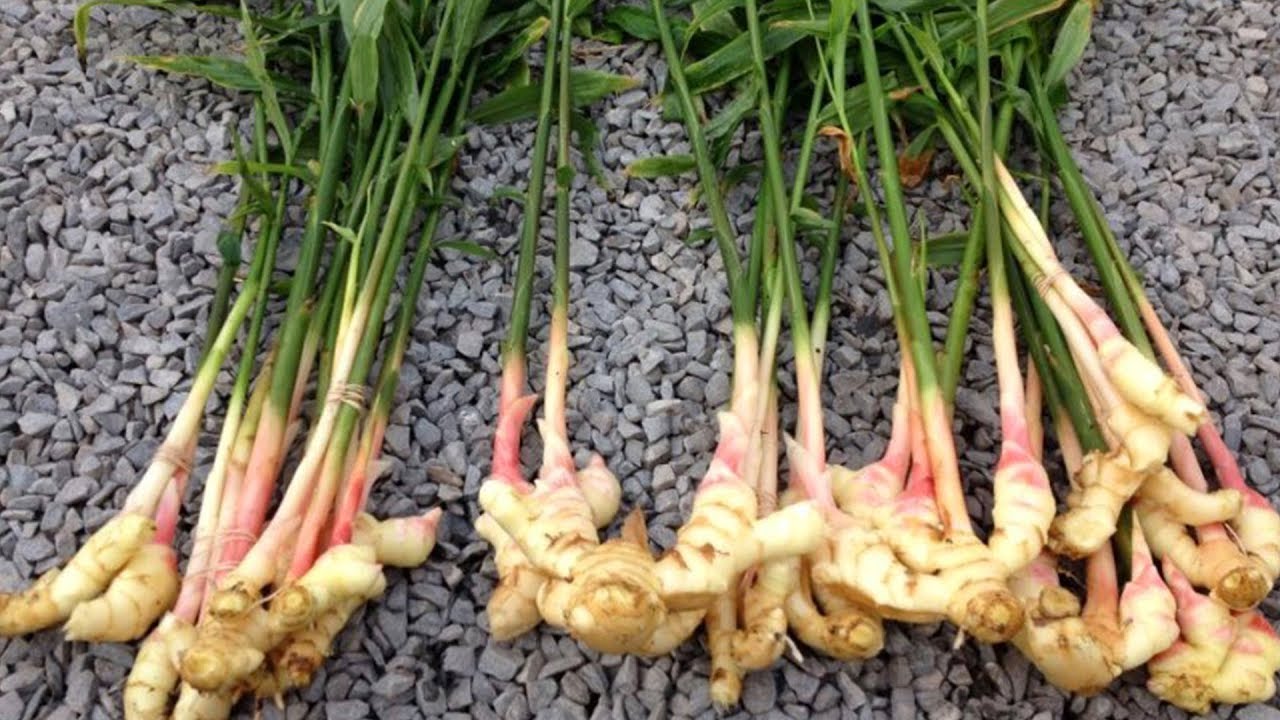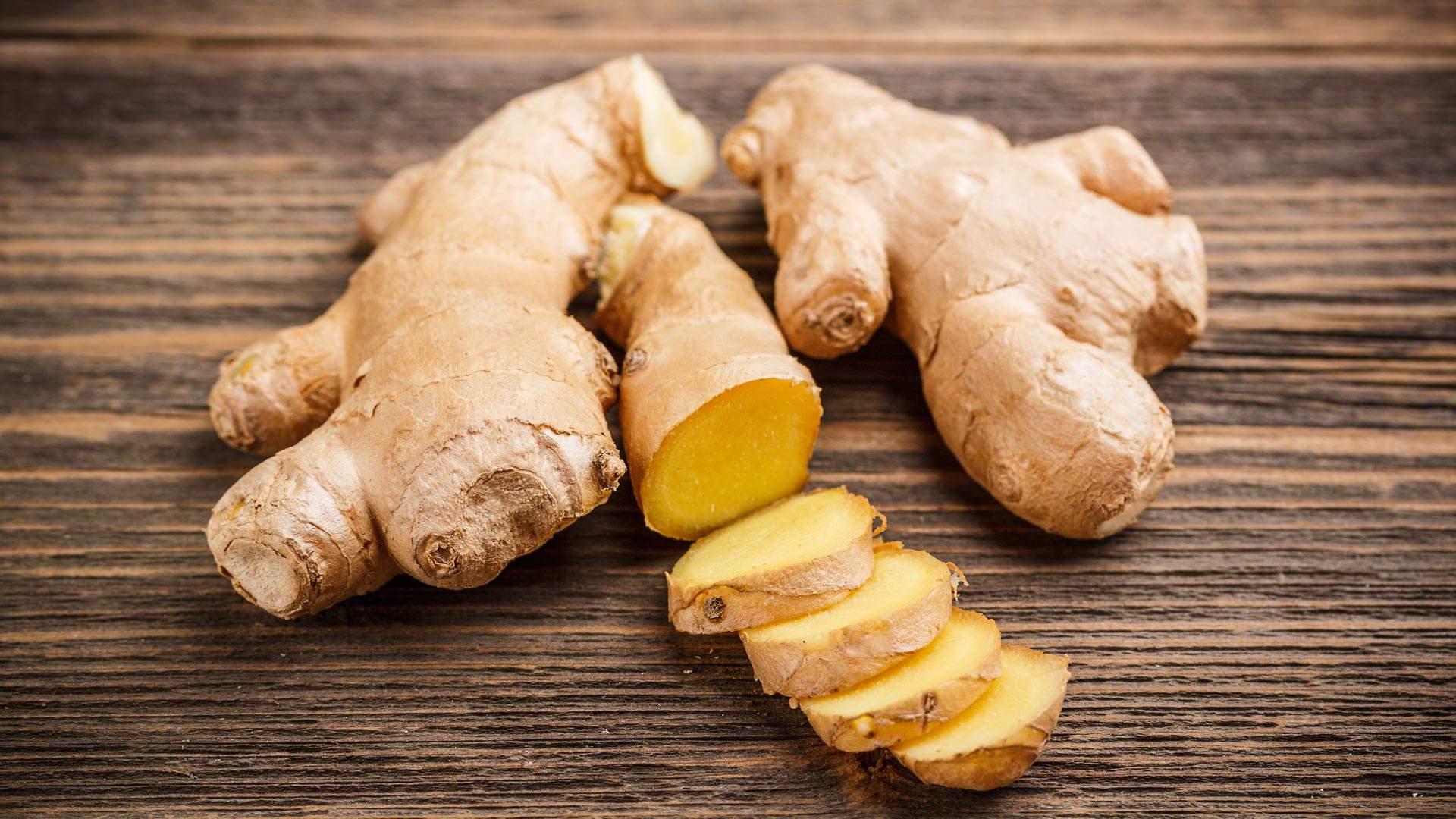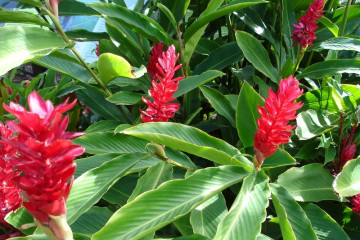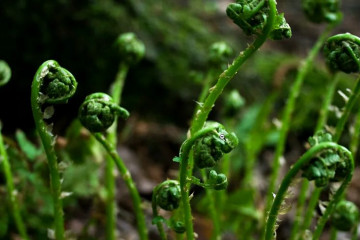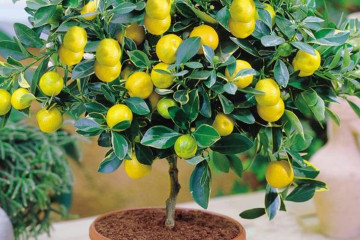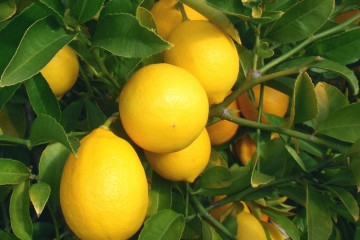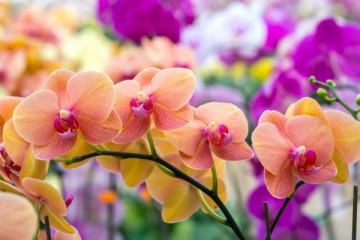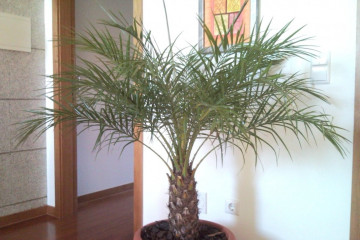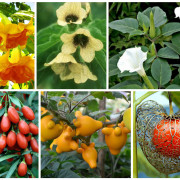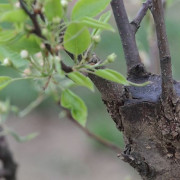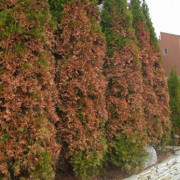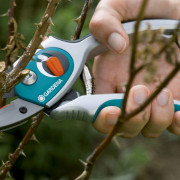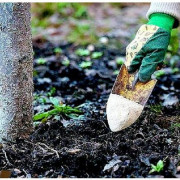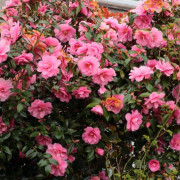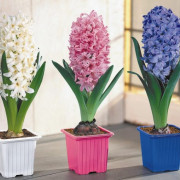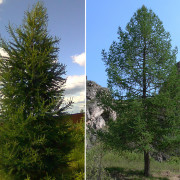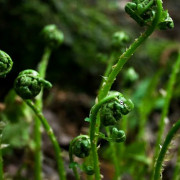How ginger grows at home and in nature
Content:
Ginger is an exotic plant from South Asia. Its popularity is due to its rich chemical composition and beneficial properties. It is a decorative flowerpot, medicine and spice. You can grow a root crop outdoors, but only in southern regions with warm and long summers. The way ginger blooms, it resembles a bamboo with buds.
Ginger - what kind of plant, what does it look like
Ginger is a perennial herb. The color of the cultivated variety depends on the variety. It has a woody aroma and a pungent, pungent taste. There are two types of root crops: black, which is not processed and white, which is cleaned from the top layer.
Ginger: how does it grow and where? Now the plant is rarely found in its natural environment. The main place of growth of burning roots is China and India. For industrial purposes, the spice is grown in Brazil, Australia and other countries with tropical climates.
Useful properties of the root
Ginger has an expectorant, anti-inflammatory, antipyretic, antimicrobial, diaphoretic effect. It is used for colds, diseases of the respiratory, musculoskeletal and reproductive systems. Mild laxative and choleretic effect allows you to cope with the problems of the digestive tract. The plant lowers blood sugar, stimulates blood flow, cleans blood vessels from cholesterol plaques. Essential ginger oil improves mood, removes the symptoms of premenstrual syndrome.
Despite the large list of useful properties, the culture has a number of limitations. The spice is forbidden to be taken by people with diseases of the digestive tract (colitis, stomach ulcer). It is not recommended to use the root during the period of breastfeeding and gestation. The medicinal product is able to prevent the development of many diseases and improve overall well-being.
Preparing to plant ginger
Before growing ginger at home, you need to know all the stages of the process. The most favorable time for planting a plant is February-March. Subject to the requirements for lighting and temperature, you can plant ginger in any season. Before placing a flowerpot in the house, it is worth remembering that Asia is the birthplace of culture. It should be a sunny and warm place; in case of heat, take out the ginger to the balcony or veranda.
How to choose a root for planting
For cultivation, take the plant only fresh. You can also find ginger seeds commercially, but this is a lengthy and costly method. The root should be firm with vegetative buds and a thin skin. Ginger with protruding fibers, dry and wilted surface is not suitable for planting. The buds resemble potato sprouts.
Disinfection
Groceries in the store are often treated with a special mixture to keep them from germinating and to keep them intact during transport.Thoroughly wash off this layer or leave the ginger in water for a day. Antiseptic preparations are no less effective: baking soda, phytosporin and potassium permanganate. Take 1 tsp in a glass of water. any means and wash the root with a mixture.
Preparing the soil and pot
Before planting ginger, you need to choose the right container and soil. It is unpretentious, but requires a special substrate. It is recommended to independently prepare the soil from deciduous humus, sand and humus, which will fill the root with all useful components.
May bloom in a small container. If you plan to grow ginger for the growth of the root system, then it is better to choose a wide, but not deep pot.
Growing ginger at home from root tubers
After disinfection, the planting material is placed in the ground, and the first dynamics of plant development will be noticeable in 2 months. At this time, gardeners begin to suspect that they will not be able to grow a tree. To accelerate growth, buds should be awakened before planting This process lasts from 3 days to 2 weeks. Where does ginger grow? There are two methods for germinating sprouts - in water and in raw moss.
In raw moss
The bottom of a high container is lined with moss, the roots of the plant are laid on top of it, buds up. How to plant hot ginger in raw moss? Gardeners recommend putting a thin layer of sphagnum on top of the ginger and pouring it with slightly warmed water. The container should be on a windowsill close to a heater or radiator. The heat will allow the spice buds to awaken faster.
In water
It is worth dealing with the landing in the water. The roots need to be planted on wooden sticks, hung over a container of water so that the lower part of the rhizome is in the water. Regularly monitor the level of liquid in the container. After the sprouts appear, the root system is cut into pieces so that each of them has 2 or 3 swollen buds. The sections from which the kidneys were removed are treated with charcoal.
The formed shoots are divided into several parts, resembling the division of potatoes before planting. Each part should have at least a couple, and preferably 3 germinated buds. All sections are lubricated with ash or coal.
How to care for a plant at home
Ginger is a tropical crop that requires a lot of ambient light. Direct sunlight burns the foliage, so it is best to choose a location on the east or west side.
Illumination and temperature conditions
When placing the pot on the southern windowsill, the window is shaded with a curtain. The optimal temperature regime is 25-30 ℃ above zero, but in winter 18-20 ℃ will do. When the temperature drops below +15 ℃, the plant hibernates and during this period watering is stopped.
Watering rules and humidity
The plant requires moist soil, but without stagnant water, so as not to provoke root rot. Dry soil is also unacceptable, especially at first after planting the root system. Yellowed leaves indicate waterlogging, and fallen and shriveled ones warn of a lack of water.
It is necessary to constantly maintain high air humidity, especially in the cold season, when heaters are running. The foliage must be watered daily with a spray bottle.
Top dressing and fertilization
Add nutrients when the first shoots appear. 2 weeks should pass between dressings. Organic mixtures, complexes with minerals, water with mullein (10: 1) are suitable as fertilizers. The plant is not fed in winter and late autumn.
Do I need pruning
The procedure depends on the purpose of growing the ginger. Pruning is not necessary if it is for beauty.For cooking and medicine, it is best to prune the branches to stimulate root growth rather than the upper stems.
When ginger blooms
The plant blooms in the second year under natural conditions or in the third year in greenhouses in compliance with the climatic regime. One or more flowers may appear depending on the variety. The color is from yellow to pronounced scarlet.
Features of harvesting
10 days before harvesting, it is necessary to stop moistening so that the plant dries up and bends down to the soil. The bush is removed along with a lump of earth, the soil is slightly shaken off the rhizome. Then the planting root is removed, the stems are cut off and the tubers are washed with water. Ginger can be eaten immediately or prepared for storage while maintaining its meatiness, firmness and moisture.
Growing ginger in the open field in the country
Under natural conditions, the plant is perennial, reaches up to 2 m in height, blooms for 2-3 years. The growing season is from 8 to 9 months. The optimum temperature is 24-26 ℃. Seedlings are planted in the soil when the frost is completely gone. The temperature in the garden should not be lower than 18 ℃. Shelter of the plant is necessary in cold weather at night.
Before planting a ginger tree, seedlings should be hardened, the sprouts of which reach 10-15 cm. Containers with seedlings are first taken out into the street for 1.5 hours in the shade, then for 5-6 hours and then for a day. Before planting, all the shoots are removed from the root parts, leaving only one at a time.
When the spice grows to 20 cm, hilling is necessary. It is done again after 10 days. To protect the ginger, a canopy is formed, moistened with warm water and fertilized with a mullein solution. 2 months before harvesting, a potassium fertilizer is added. Harvesting is carried out at the end of summer with partially yellowed foliage. 10 days before digging, watering is stopped, and the roots removed from the soil are cleaned and dried.
When choosing a place for planting spices, a well-lit area is chosen, but without direct sunlight during the day. Cover the plant for this time. There should be no strong gusty wind, ideally there should be no drafts. In cold climates, it is better to plant ginger in a greenhouse.
Propagation of ginger by seeds
Purchased plant seeds are difficult to find. Most often, they are looking for novice gardeners. After purchase, they are placed in light soil without a depression. The container is covered with glass or a transparent bag, creating a greenhouse effect. They ventilate and irrigate every day. After a couple of days, the first shoots appear. If there is at least one leaf, the ginger is planted in different pots. In the first year, high humidity, temperature and diffused light are created. After 3 years, the plant is dug up and the root is divided.
Growing problems, diseases and pests
Ginger is considered a crop that is resistant to parasites and various diseases. When growing a plant, you can encounter such a pest as a spider mite. They recognize him by the specks on the yellow foliage and the pallor of the stems. To make the web more visible, it is recommended to irrigate the crop.
How to get rid of spider mites:
- The plant should receive a lot of moisture and humidification of the air. The problem often arises from lack of drainage. The foliage should be periodically washed with water under the shower, wrapping the root system and flowerpot with a plastic bag.
- The most effective method of pest control is the use of insecticides. It is required to process the culture once a week.Sticks that are placed in a flowerpot do not work against a tick.
Ginger helps to cope with colds, gives a special taste to food, and its oil will improve the condition of the skin. A universal product is purchased in a store, but planting on its own guarantees its high quality and environmental friendliness. Before growing, you need to know the rules for choosing a root and care, breeding methods, how ginger grows, flowering time and what problems you may encounter.
